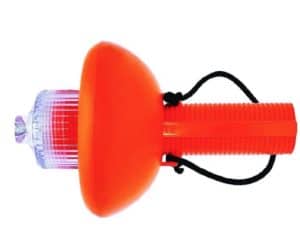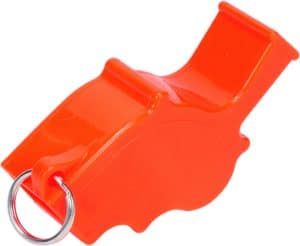Sporting Life
Renewing my Watercraft Go-Bag
A go-bag, as anyone who has watched any special forces action movie has noted, is a relatively small fabric bag containing all of the essentials necessary for an adventurous undertaking, handy and able to be grabbed at a moment’s notice.
Since my watercraft, a light 17-foot center console skiff, always sits outside on its travel trailer I don’t keep any critical items on board that could suffer from exposure to the elements or otherwise grow legs.
I maintain all the mandated safety items in one canvas tool bag, perched near the front door. Also included are a few generally useful items and still others particularly helpful in any adventurous misfire.
Number one is the fire extinguisher. Checking to see that the pressure level is in the safe and ready zone, I can relax in the knowledge that the boat and I are covered in that arena. Nothing is as dangerous as a fire on the water.
Next are my distress signal arrangements. I have upgraded my flares to an electronic Weems and Plath signal device that is visible at extreme distance. I prefer this to the older pyrotechnic devices that are, unfortunately, of limited shelf life as well as possibly dangerous in untrained or clumsy hands.
In testing my device, it is obvious that the batteries still retain ample power, but the item’s documentation calls for annual replacement. I put the old batteries in a household flashlight and install brand new ones.
I also check the manual signal whistles. One is required by law but I like to have a number of them in the bag in case of an emergency. Their sound travels much further and lasts exponentially longer than one’s own voice.
Next up is a battery check on my handheld marine radio. The indicator reads that the battery is fully charged but I will recharge it to be sure, it is a handy communications device in an emergency, especially if cell phones get submerged. The marine radio is waterproof, it floats, it provides updated weather conditions and storm alerts and has a backup battery pack.
Corrosion proof tools are almost as important as signal devices in this go-bag. I pack a multi-tip screwdriver, an adjustable wrench, wire cutter, a folding multi-tool device (Leatherman), two small flashlights and spare new batteries for everything.
A small first aid kit containing adhesive bandages, medical tape, gauze and disinfectant are good items to have in a waterproof bag. A sharp, stainless steel knife in a protective sheath and a small spray can of WD-40 completes that section of the bag.
In the nice-to-have section are a small container of sun block, a tube of insect repellent, some antacids and motion sickness tablets. During the horsefly season, you may want an outdoor insect spray, for those nasty devils are immune to most insect repellents.
Light, fabric sun masks and face sleeves are also increasingly in use these days as are arm (and leg) sun sleeves. It’s wise to have a few extra on hand for when a guest becomes miserable from unexpected overexposure and it’s too late for sun block.
You can’t be too careful on the water but being prepared is one way to ensure the best experience possible. It’s a small investment for a consistently major return.
Fishfinder:
Since catch-and-release for striped bass is prohibited the whole of April there is little to report on the availability nor location of big rockfish these days and the May 1 season opener is anyone’s guess. The constant wind and rain, as well as the viral quarantine, have played a part in limiting travel on and around the Bay. It will be interesting to see if the limited travel may produce more successful rockfish and perch spawns this year. The perch spawning runs should have peaked by now so the fish will now be found throughout the tribs and into the mainstem, though their movements will be unpredictable. To paraphrase an old angler’s saw, “Fishing around the Chesapeake is kind of like romance, when it’s good it’s very, very good and when it’s bad, it’s still pretty good.”


